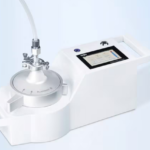Golf mats are a popular tool for golfers who want to practice their swings at home, in the garage, or even in their backyard. Whether you’re a beginner looking to improve your game or an experienced player wanting to refine your technique, golf mats offer an excellent way to work on your skills anytime. In this guide, we’ll cover everything you need to know about golf mats, including their benefits, types, and how to choose the best one for your needs.
What Are Golf Mats?
Golf mats are artificial surfaces designed to simulate the feel of hitting a golf ball on real grass. They provide golfers with a safe and convenient space to practice their swings without the need for a golf course. These mats can be used indoors or outdoors, making them versatile for year-round training.
Benefits of Using Golf Mats
Golf mats offer several key benefits that make them a must-have for many golfers:
- Convenience: Practice whenever you want, whether it’s rainy, sunny, or snowy outside.
- Durability: Golf mats are designed to last for years and can withstand repeated use.
- Injury Prevention: Unlike hitting from hard surfaces like concrete, golf mats help reduce the risk of injury to your hands, wrists, and joints.
- Cost-Effective: With a golf mat, you can practice at home without paying for a driving range or golf course fees.
Types of Golf Mats
Not all golf mats are the same, and choosing the right one depends on what kind of practice you want to do. Below are the most common types:
1. Hitting Mats
Hitting mats are designed to simulate the surface of a fairway or tee box. They allow you to hit full shots with drivers, irons, and wedges. Some hitting mats come with turf that mimics real grass, while others may have a more synthetic feel.
- Ideal for: Practicing full swings with any club.
- Best for: Golfers who want to focus on improving their accuracy and consistency.
2. Chipping Mats
Chipping mats are smaller, specialized mats used for short-game practice, particularly chips and pitches. They provide a softer surface for practicing short shots around the green.
- Ideal for: Short game practice.
- Best for: Players working on their accuracy and touch around the greens.
3. Putting Mats
Putting mats are designed for practicing putting strokes indoors. They usually come with a simulated hole and a surface that replicates a putting green. Some models have adjustable slopes for more challenging practice.
- Ideal for: Indoor putting practice.
- Best for: Golfers looking to improve their putting accuracy and distance control.
Factors to Consider When Choosing a Golf Mat
When shopping for a golf mat, there are a few important factors to keep in mind:
- Size: Make sure the mat fits the space where you plan to use it. Larger mats provide more room for full swings, while smaller mats are better for practicing chips and putts.
- Material: Look for mats made from durable materials like rubber or synthetic turf that can withstand repeated use.
- Thickness: Thicker mats are better for reducing the shock of hitting the ball, especially if you’re using a driver.
- Portability: If you plan to move the mat frequently, consider a lightweight model that is easy to fold and store.
- Realism: Higher-quality mats mimic the feel of natural grass, offering a more authentic experience when hitting balls.
How to Use Golf Mats Effectively?
To make the most of your golf mat, follow these tips:
- Place the mat on a flat surface: Make sure the mat lies flat on the ground to avoid an uneven hitting surface.
- Use a tee: If you’re practicing full shots with a driver or woods, using a tee will help simulate hitting from a real tee box.
- Practice regularly: Consistency is key to improving your game. Set aside time each week to practice different shots, from drives to putts.
- Incorporate variety: Use different types of golf mats to work on different aspects of your game, such as putting, chipping, and full swings.
FAQs
Q: Can golf mats help improve my game?
A: Yes, golf mats are an excellent tool for improving your game. They allow you to practice consistently, work on specific skills like your short game or putting, and offer a safe alternative to practicing on hard surfaces.
Q: Are golf mats durable?
A: High-quality golf mats are designed to last for years. Look for mats made from durable materials like rubber or synthetic turf for long-lasting performance.
Q: Can I use a golf mat indoors?
A: Yes, many golf mats are designed for indoor use, especially putting mats. Be sure to place the mat on a smooth surface, such as carpet or hardwood floors, for the best results.
Q: Do golf mats simulate the real feel of grass?
A: While golf mats may not feel exactly like real grass, higher-end mats do a good job of simulating the experience, especially for full swings. Some mats even have features that replicate the bounce and roll of a golf ball.
Conclusion
Golf mats are a fantastic way to practice your game at home, whether you’re focusing on your full swing, short game, or putting. They offer convenience, durability, and injury prevention, all while providing a cost-effective solution for golfers of all levels. By choosing the right type of mat and using it regularly, you’ll be able to improve your skills and lower your scores. Don’t forget to check the size, material, and thickness when selecting a mat, and always aim for consistency in your practice. Whether you’re a beginner or an experienced player, a golf mat is an excellent investment for taking your game to the next level.


